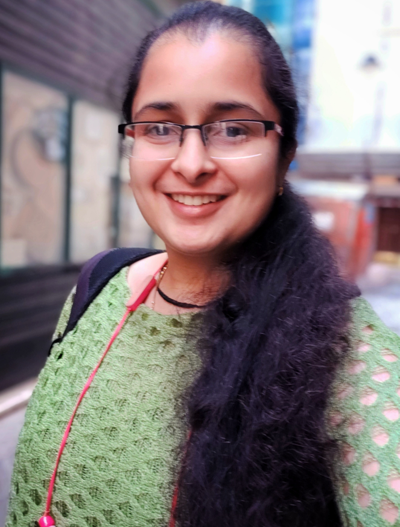3D Printing of Foams for Acoustic Applications
Prasansha Rastogi is a PhD student in the department Engineering Fluid Dynamics. (Co)Promotors are prof.dr.ir. C.H. Venner, dr.ir. C.W. Visser and dr.ir. Y.H. Wijnant from the faculty Engineering Technology.
 Polymer foams are widely used, for example to protect against shocks, for thermal insulation, or to reduce noise propagation. Foams are usually produced in bulk, resulting in large slabs with homogeneous properties yet locally polydisperse cell sizes. However, for most applications, gradients are highly beneficial as these allow locally tailoring the response of the foam to mechanical compression. In this thesis, a novel foam manufacturing technique named “Direct Bubble Writing” is explored to 3D-print foam parts with internal density gradients, controlled cell size, and a prescribed outer shape, and their acoustic performance is tested.
Polymer foams are widely used, for example to protect against shocks, for thermal insulation, or to reduce noise propagation. Foams are usually produced in bulk, resulting in large slabs with homogeneous properties yet locally polydisperse cell sizes. However, for most applications, gradients are highly beneficial as these allow locally tailoring the response of the foam to mechanical compression. In this thesis, a novel foam manufacturing technique named “Direct Bubble Writing” is explored to 3D-print foam parts with internal density gradients, controlled cell size, and a prescribed outer shape, and their acoustic performance is tested.
The direct bubble writing technology uses a core-shell nozzle that dispenses a stream of gas-filled liquid bubbles. As these bubbles flow down, exposure of the stream to the UV lights initiates the polymerization in the bubble shells on-the-fly. The bubble shells are polymerized to hold their shape and are stacked together to produce 3D foam architectures. The moving axes of the printer enables one-step fabrication of 3D designs accessible including hollow or solid designs with cylindrical or square cross-sections.
This thesis first describes the state of the art of materials for sound transmission loss in Chapter 2. Subsequently, in Chapter 3, a range of UV-curable resins for fabrication of micro-materials is developed, including resins based on acrylates and thiol-enes. Chapter 4 describes how the direct bubble writing process was optimized by systematically assessing the design parameters for printing uniform and density gradient structures. In chapter 5, the control parameters of foam printing (e.g. the type of gas and the gas flow rate) were systematically varied to create samples with controlled gradients. The printed foams are tested for sound transmission loss (STL), revealing a maximum STL of 25 dB for homogeneous foams at frequencies around 2600 Hz. However, sandwich-inspired gradient foams enhance the STL to exceed 60 dB for frequencies around 2400 Hz. These foams also exhibit broadband acoustic absorption (~0.65) for frequencies between 300 and 2600 Hz. Thus, direct bubble writing is a promising platform to produce custom (gradient) design lightweight porous acoustic materials for broadband sound transmission loss at low frequencies.





